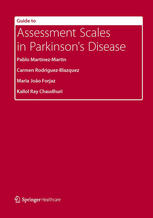

Most ebook files are in PDF format, so you can easily read them using various software such as Foxit Reader or directly on the Google Chrome browser.
Some ebook files are released by publishers in other formats such as .awz, .mobi, .epub, .fb2, etc. You may need to install specific software to read these formats on mobile/PC, such as Calibre.
Please read the tutorial at this link: https://ebookbell.com/faq
We offer FREE conversion to the popular formats you request; however, this may take some time. Therefore, right after payment, please email us, and we will try to provide the service as quickly as possible.
For some exceptional file formats or broken links (if any), please refrain from opening any disputes. Instead, email us first, and we will try to assist within a maximum of 6 hours.
EbookBell Team

4.0
66 reviewsThis Guide assesses the key clinimetric attributes in the assessment of Parkinson's Disease (PD), with the intention to offer rapid and pragmatic information on the most relevant scales used in PD. Parkinson’s disease affects approximately 4 million people globally and is most commonly seen in people over the age of 50. The disease is a progressive disorder of the nervous system, and presents a number of movement and cognitive symptoms, thereby greatly affecting a patients quality of life. The use of scales for assessment in neurological disorders such as PD arises from the need to quantify disorders and states (such constructs as disability, symptoms, quality of life). Assessment scales are often categorised into two categories: generic (i.e. those scales usable in any health condition), and specific (i.e. scales developed for exclusive use in PD). They can have a variety of components: single-item and multi-item or composite scale; unidimensional and multidimensional; and as disease-centered and patient-centered measures. The creation and validation of scales is complex, with scales undergoing numerous studies to assess criteria such as acceptability, reliability, and responsiveness. In the process of validation of a scale the following attributes should be tested to ascertain whether a scale is an effective instrument of measurement.